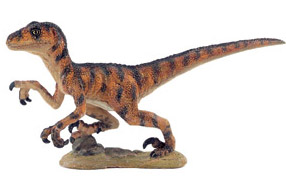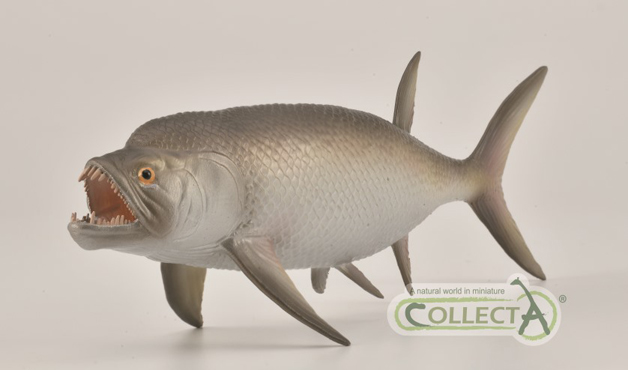Reviews, comments and feedback on television programmes featuring themes of interest to dinosaur fans and fossil collectors by Everything Dinosaur team members.
Review of First Episode of Primeval (Series Two)
Review of the Start of Primeval Series Two
When Primeval first aired on UK television back in February 2007, it was billed as the independent networks attempt to lure away part of the Doctor Who audience and help ITV win back the key demographic of Saturday night family TV viewing.
Primeval Reviewed
Yesterday saw the first episode of series two, with ITV once again hoping that this programme would help attract something like the 7 million viewers each episode achieved during the first series.
The storyline although a little contrived, allows the CGI experts plenty of scope. Unexplained phenomena are ripping holes in space and time permitting prehistoric creatures from the past and the Earth’s future to roam the UK. A team of misfits (but very good looking misfits nonetheless), struggle to deal with these monsters before they are unleashed onto an unsuspecting public.
Headed by the intriguingly entitled evolutionary zoologist Professor Nick Cutter, the first episode in series two (one of seven programmes due to be shown on Saturday nights on ITV1), kicks off with an encounter with some dinosaurs.
The first series had been criticised in some quarters because there were few dinosaurs shown. There were pterosaurs, mammal-like reptiles, mosasaurs and even giant arthropods but the dinosaurs were relatively scarce. This is a little surprising as one of the collaborators on the series – Impossible Pictures; were responsible for the special effects in programmes like Prehistoric Park and Walking with Dinosaurs and one of the pretences for Primeval seems to be to use up the stock footage of prehistoric animals from these earlier programmes. Dinosaur models may also have been used in some of the close up shots. Not sure if ITV had a stock of Deinonychus dinosaur models available, but the “raptors” in this programme did seem to be roughly the size of Deinonychus.
Lots of Dinosaurs
Dinosaur fans did not have to wait long for their favourite monsters to show up in series two. The opening episode is set in a shopping mall, one that is visited by a family of dromaeosaurs unwittingly transported there by an anomaly presumably from the middle of the Cretaceous. On first observing these carnivorous dinosaurs, Connor Temple (played by Andrew Lee Potts), calls them “raptors” a fairly generalised term popularised by the Jurassic Park films with the depiction of over-sized Velociraptors. The CGI models are well created, nice to see the proto-feathers and modified scales on backs of these animals, although how quickly dromaeosaurs could make progress on the shiny, slippery floors of a shopping mall is open to question. Professor Cutter and his team have to be congratulated for making up the correct dose of anaesthetic to dart these creatures without any knowledge of dinosaur metabolism, perhaps they have been studying dinosaur models and they do well to stand their ground against a decidedly angry parent, hell-bent on trying to tear them to pieces. They tend to fair better than the hapless security guards who quickly end up as dinosaur fodder.
“Raptors” on the Prowl
It is not made clear what type of dinosaur the “raptors” actually represent, although reference to the makers notes on episode one indicate that these dinosaurs were based on Deinonychus (the name means terrible claw). This dinosaur was named and described by the American scientist John Ostrom in 1969, although the fossils of this dinosaur had been known for the best part of forty years. Ostrom caused controversy when he used Deinonychus as the basis for a theory that dinosaurs were much more bird-like and active. At the time, the common held view was that these animals were cold-blooded and sluggish. About a dozen specimens of Deinonychus are known, all of which come from the Western USA and date from approximately 100 million years ago.
A Model of Deinonychus
Picture credit: Everything Dinosaur
The picture above shows a 1:30 scale model of Deinonychus in a typically active pose. The model is made by Bullyland of Germany and is one of their museum line of hand-painted prehistoric animals.
To view dinosaur models: Dinosaur and Prehistoric Animal Models.
Expect more monsters to make an impression over the next few weeks including giant worms (episode two) and a Sabre-toothed cat which will be seen roaming around the English countryside the week following. Perhaps this could be the “Beast of Bodmin Moor”?



